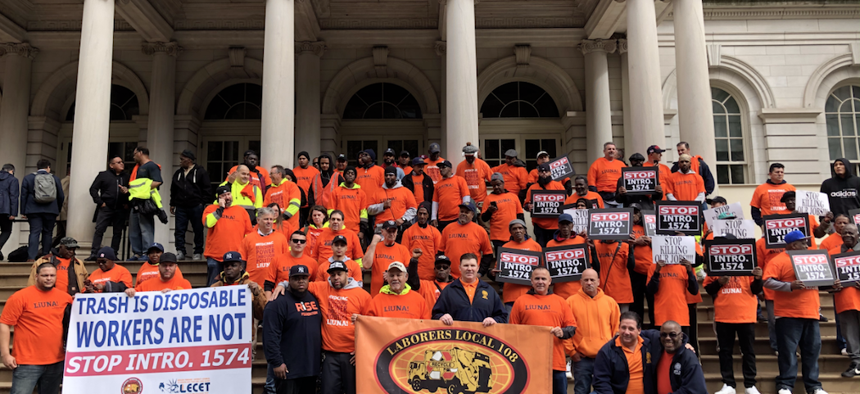If you throw an old jack-o’-lantern into the trash at your apartment, the New York City Department of Sanitation picks it up. But if a commercial business tosses a pumpkin, they’ve got to hire a private waste hauling company – an industry beset by long hours, dangerous working conditions, poor environmental records and pedestrian deaths. The New York City Council passed a package of bills on Wednesday meant to bring waste’s “Wild West” under a regulatory regime.
The broadest bill, Int. 1574-A, creates new commercial waste zones throughout the city – allowing a limited number of haulers to compete for trash pick-up contracts in each geographic area. Here’s how it all breaks down.
20: The minimum number of separate commercial waste zones in the city.
3: The maximum number of private haulers allowed to work in each zone. This was a compromise between those who wanted exclusive, single-hauler zones and those who wanted up to five carters competing per zone.
90: The number of commercial waste companies in the city, according to the City Council. Some in the industry claim it’s actually far less. Either way, companies are expected to consolidate.
2,600: The number of workers in the commercial waste industry citywide. The new law is expected to bring the total headcount to 2,631, according to a report from the New York City Department of Sanitation.
7: The number of people killed by private waste trucks in New York City in 2017, according to ProPublica. The bill package gives more safety oversight of waste haulers to the Department of Sanitation and the city’s Business Integrity Commission.
18 million: The reduction in driving miles expected per year, for the whole sector. Efficiency is the name of the game with this waste zone overhaul, and with haulers confined to their specific zones, supporters say it will improve safety and reduce environmental impacts.
$20.76: The maximum price per ton of trash haulers are currently allowed to charge customers. The city will now be allowed to set a minimum price, too, to prevent underbidding, but that hasn’t been set yet.
$32: The average hourly wage for drivers under Laborers Local 108, the biggest union in the sector. Helpers make an average of $26 per hour.
2024: The year by which the whole program is expected to be phased in – nine years after the city commissioned the study that got the ball rolling.


